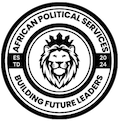Afri Polls' comprehensive political culture is designed to provide users with a robust platform that addresses critical political, demographic, economic, and social issues on a global scale. By fostering connections between people, governments, and international stakeholders, and offering tools that encourage transparency, engagement, and informed decision-making, Afri Polls aims to cultivate a political ecosystem that is inclusive, data-driven, and forward-thinking.
